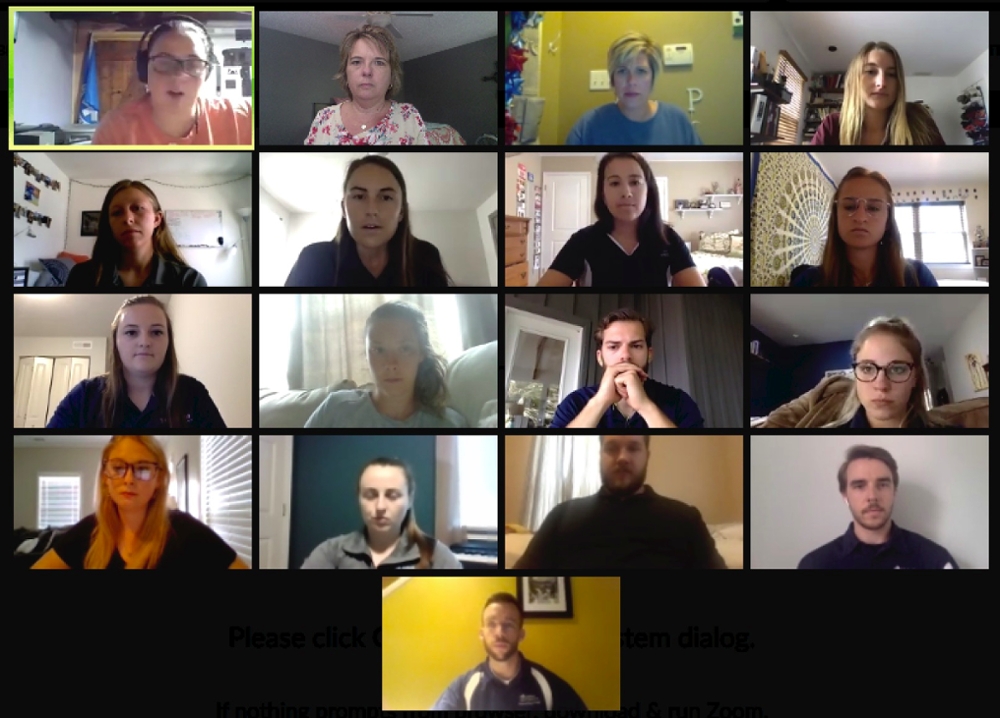
More than ever before, academic programs around the world are pushing the bounds of virtual learning and training. Last week, Samford’s Experiential Learning and Simulation Center hosted a virtual simulation experience for Doctor of Physical Therapy students from Samford’s School of Health Professions and DeSales University in Center Valley, Pennsylvania. The event was the first telehealth simulation for both programs.
During the virtual simulation, physical therapy students from both universities utilized the Zoom collaboration platform to individually assess two standardized patients. Standardized patients are individuals who take on the characteristics of a real patient, affording students an opportunity to learn and be evaluated on learned skills in a simulated clinical environment.
Through simulations, Samford’s College of Health Sciences seeks to prepare students who are ready for a variety of scenarios and circumstances. According to Sarah Ross, assistant professor for Samford’s physical therapy program, physical therapy practices have dramatically increased their use of telehealth to address the needs of patients due to the COVID-19 pandemic. “Giving our students exposure to this practice setting was a great opportunity to introduce them to this different avenue of health care, one that none of them have experienced as clinicians,” Ross added.
In total, 63 students participated in the simulation event – 35 Samford students and 28 from DeSales University. Standardized patients from both universities also participated. The students utilized telehealth to assess two patients being seen for a follow-up visit. Each patient had similar issues with joint mobility, but one patient was cognitively intact and one patient was cognitively impaired and had a spouse present. Following the assessment, students individually developed a prioritized list of care before virtually meeting with a student from the opposing university to collaboratively develop a plan of care for each patient. The students then met with faculty from both schools to debrief.
Both Samford University’s and DeSales University’s physical therapy programs place a heavy emphasis on interprofessional education and practice but this simulation provided an opportunity for intraprofessional collaboration. “This simulation was unique because it afforded students an opportunity to collaborate, discuss and explore similarities and differences in what students are learning across different institutions,” said Jill Pence, associate professor and Experiential Learning and Simulation Center executive director for Samford University.
“Physical therapists interact with many different disciplines day in and day out, but they also interact with other physical therapists,” said Ross. “Students were able to see how their backgrounds and knowledge were similar and different at the same time, and how they could learn from each other because of it. In the end, the better we collaborate with one another, the better the outcomes for all of our patients.”
Following implementation of remote learning in March, Pence says she began researching virtual simulation options for students and faculty. While she found an abundance of options for medicine and nursing, the other health professions, which she says are newer to simulation, had limited options. In an effort to find an option for Doctor of Physical Therapy students, Pence sought an online community of simulation directors and specialists. She connected with the simulation director at DeSales University and the virtual simulation preparation began.
The event took a significant amount of planning according to Pence, roughly five weeks with six faculty working on multiple logistical and academic aspects. “I look forward to reading the feedback from the evaluations and taking that information to improve future simulations,” Pence added.
